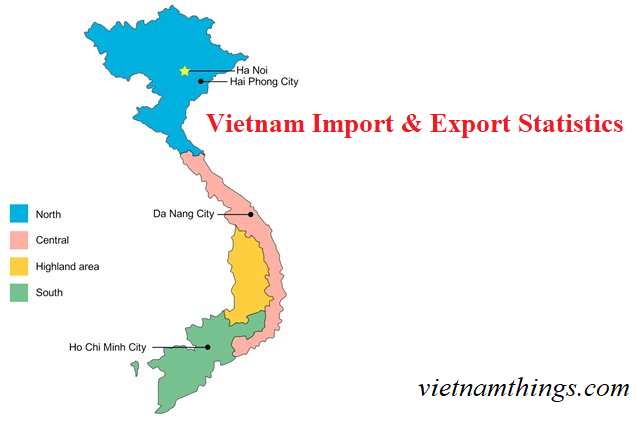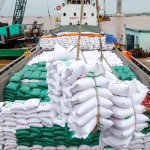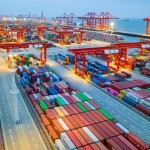Total number of posts 26.
 With its rising costs, China is no longer the go-to destination for many businesses, and Vietnam has arisen as a serious competitor. Recent trends show that the number of orders shifting from China to Vietnam has seen a significant increase.
With its rising costs, China is no longer the go-to destination for many businesses, and Vietnam has arisen as a serious competitor. Recent trends show that the number of orders shifting from China to Vietnam has seen a significant increase.
For example, China’s Pearl River Delta, long known as one of the key factory centers for the world’s manufacturers (particularly those from Hong Kong) has now become too costly for many companies to stay in the region.
In the past few years, a growing number of businesses have relocated their operations from China to Vietnam in an attempt to escape rising costs and an increasingly complex regulatory environment.
Given the recent trade war between China and the US, alongside Vietnam’s recent free trade agreements such as the RCEP, the EVFTA, and the UKVFTA the country is steadily becoming more open to international trade and investment.
Located in a strategic position for foreign companies with operations throughout Southeast Asia, Vietnam is an ideal export hub to reach other ASEAN markets.
Compared with other developing markets in the region, Vietnam is emerging as the clear leader in low-cost manufacturing and sourcing, with the country’s manufacturing sector accounting for 25 percent of the country’s total GDP in 2021.
Currently, labor costs in Vietnam are approximately 50 percent of those in China at US$2.99 per hour compared to US$6.50 per hour respectively, and around 40 percent of those reported in Thailand and the Philippines. With the country’s workforce growing annually, Vietnamese workers are comparatively inexpensive, young, and, increasingly, highly skilled.
Another driving force behind Vietnam’s growing popularity is the country’s collection of free trade agreements.
The RCEP, which came into force on January 1, 2022, has also fostered the entry of goods exported in and out of Vietnam as it reduces cost, improves market access as well as offers streamlined customs procedures.
In terms of regulatory and financial incentives, Vietnam has become increasingly investor-friendly in recent years –the government has taken such actions as reforming its financial sector, streamlining business regulations, and improving the quality of its workforce.
Since the mid-2000s, the Vietnamese government has offered extremely competitive financial incentives to businesses seeking to set up operations in the country, in addition to a zero percent withholding tax on dividends remitted overseas and a low corporate income tax (CIT) rate of 20 percent. These advantages have enabled Vietnam to become a premier “sourcing economy” in the eyes of many companies.
Current state of Vietnam’s economy
Vietnam is seeing strong growth on multiple fronts. Of particular interest to investors has been the continuing growth of Vietnam’s domestic consumer market, which has been developing by leaps and bounds.
This growth is expected to continue for some time to come – domestic consumption is predicted to increase at a rate of 20 percent per year. With a population of over 97 million and Southeast Asia’s fastest-growing middle class, Vietnam clearly represents an important market for foreign goods. Compared to 2017, the US has overtaken China for being the largest export market for Vietnam.
|
Export Markets |
Export Value (2021) |
|
US |
US$96.3 billion |
|
China |
US$56 billion |
|
South Korea |
US$22 billion |
|
Japan |
US$20.1 billion |
|
Hong Kong |
US$12 billion |
|
Import Markets |
Import Value (2021) |
|
China |
US$109.9 billion |
|
South Korea |
US$56.2 billion |
|
Japan |
US$22.7 billion |
|
Taiwan |
US$20.8 billion |
|
US |
US$15.3 billion |
Source: General Statistics Office
Industry Snapshots
While Vietnam is widely known for being a prime location for investors operating in the textile industry, there are many other business areas that are seeing significant growth in the country. Interestingly, Vietnam is well on its way to becoming a key location for high-technology manufacturing, with companies like Samsung, LG Electronics, Nokia, and Intel making multi-billion dollar investments into the country. Other business areas include information and communications technology, automotive, and medical devices.
Bilateral trade between Vietnam and the US hit a new record high in 2021, with a total of US$111.56 billion, up nearly US$21 billion year-on-year as per the General Department of Customs.
The US also had the second-highest import-export turnover with Vietnam at US$100 billion, followed by China.
|
Top Exports |
Export Value (2021) |
|
Phones |
US$57.5 billion |
|
Electronic goods/Computers |
US$50.8 billion |
|
Machinery |
US$38.3 billion |
|
Textiles |
US$32.8 billion |
|
Footwear |
US$17.8 billion |
|
Top Imports |
Import Value (2021) |
|
Electronic goods/Computers |
US$75.4 billion |
|
Machinery |
US$46.3 billion |
|
Phones |
US$21.4 billion |
|
Fabrics |
US$14.3 billion |
|
Plastics (in primary form) |
US$11.7 billion |
Textiles and Garments
Textiles consistently rank among Vietnam’s leading export industries, with over 6000 textiles and garments manufacturing companies, employing upwards of 2.5 million workers. The growth of the garment industry has been impressive and plays an important role in the economic growth of the country. In 2020, Vietnam surpassed Bangladesh to become the world’s second largest exporter of ready made garments (RMG). Further, the industry had an export market share of 7.05 percent in 2020, an increase from 5.54 percent of 2016.
China is the only nation that surpasses Vietnam in terms of net garment exports to the US. However, manufacturers and investors are pivoting towards Vietnam; the conditions for setting up shop are more economically convenient than doing so in China.
Within ASEAN, Vietnam is the strongest competitor for inheriting low value-added textiles and apparel manufacturing from China. In contrast to other leading textile exporters in the region (Indonesia, Thailand, Malaysia), the share of Vietnam’s textile exports against its total exports has grown in recent years.
Electronics
Vietnam has emerged as an important electronics exporter, with electrical and electronic products overtaking coffee, textiles, and rice to become the country’s top export item. Samsung is Vietnam’s largest exporter and has helped the country achieve a trade surplus for the first time in many years.
Exports of smartphones and computer parts now account for more in export earnings than oil and garments. Samsung has turned Vietnam into a global manufacturing base for its products, producing almost a third of the firm’s output. Samsung has invested over US$17.5 billion into the country as of 2021.
Samsung has also agreed to cooperate with the Vietnamese government in order to help develop the country’s domestic support industries. This represents a key business opportunity for foreign technology companies to set up operations in Vietnam and sell their components to companies like Samsung.
Pharmaceuticals
The future looks to be very interesting for the pharmaceutical industry in Vietnam. Vietnam’s pharmaceutical market is projected to increase to US$7.7 billion in 2021 and US$16.1 billion in 2026. Driving this market growth is the Vietnamese government’s goal of achieving universal health coverage, combined with a growing market of consumers who want accessible healthcare.
As per IQVIA (2021), as of 2020, the volume size for the industry was US$6.4 billion. Across the country, there are around 250 manufacturing factories, 200 import-export units, 4,300 wholesalers, and another 62,000 retailers catering to the pharmaceutical industry.
Automotive
Vietnam is becoming an important market for auto sales: the Vietnamese automobile market is expected to sell 1.7-1.85 million units by 2035. In the foreseeable future, an estimated 750,000-800,000 units are expected to be sold by 2025.
Although the nation’s rate of car ownership per capita is still much lower than other markets in Asia (only around 5.7 percent of Vietnamese households owned a car in 2020), Vietnam is still one of the countries with the fastest-growing purchasing power for personal cars over the past ten years. 9 percent of Vietnamese households are expected to own a car by 2025 – equivalent to the current level of India and the Philippines. By 2030, car ownership will reach 30 percent. Tax reductions on imported cars and increased income are attributed to the growth.
Despite an increasingly competitive auto market throughout the ASEAN region, Vietnam has stated that it intends to work aggressively to build up its own domestic auto industry. Among the key reasons for this goal is that the auto industry has the potential to create thousands of jobs for locals and create a strong system of supporting industries.
Additionally, Vietnamese automakers, such as VinFast have also started launching some first automobile models to the foreign market, signaling a promising future of cars exported from Vietnam.
Coffee
Vietnam is currently, the world’s second-largest coffee exporter, behind only Brazil. In 2021, the export value for Vietnam’s coffee reached US$3.1 billion. The industry plays an important role in Vietnam’s agriculture economy and is an export oriented industry with more than 90 percent of production volume exported. To increase its value, the government has been promoting the shift from exporting beans to processed coffee.
Many experts believe that Vietnam has the potential to overtake Brazil due to its favorable climate conditions and lower-cost production.
E-commerce
Vietnam is quickly becoming a prime market for foreign investment in e-commerce activities. The country’s rapidly growing economy and middle class are, in turn, spawning a strong consumer culture and increasing levels of disposable income. The pandemic has accentuated the demand for electronic retail as delivery, ride-sharing, and e-wallets gradually become a norm for the Vietnamese, especially among the youth.
Vietnam’s e-commerce business increased by 18 percent to US$11.8 billion in 2020, making it the only country in Southeast Asia to observe double-digit growth during the pandemic. This opens a booming outlook for the country’s e-commerce growth.
Being a signatory to 13 FTAs, Vietnam also provides favorable conditions for investors to start a business in e-commerce with reduced or zero customs tariffs on commodities imported or exported from other countries.
Source: Asia Briefing














